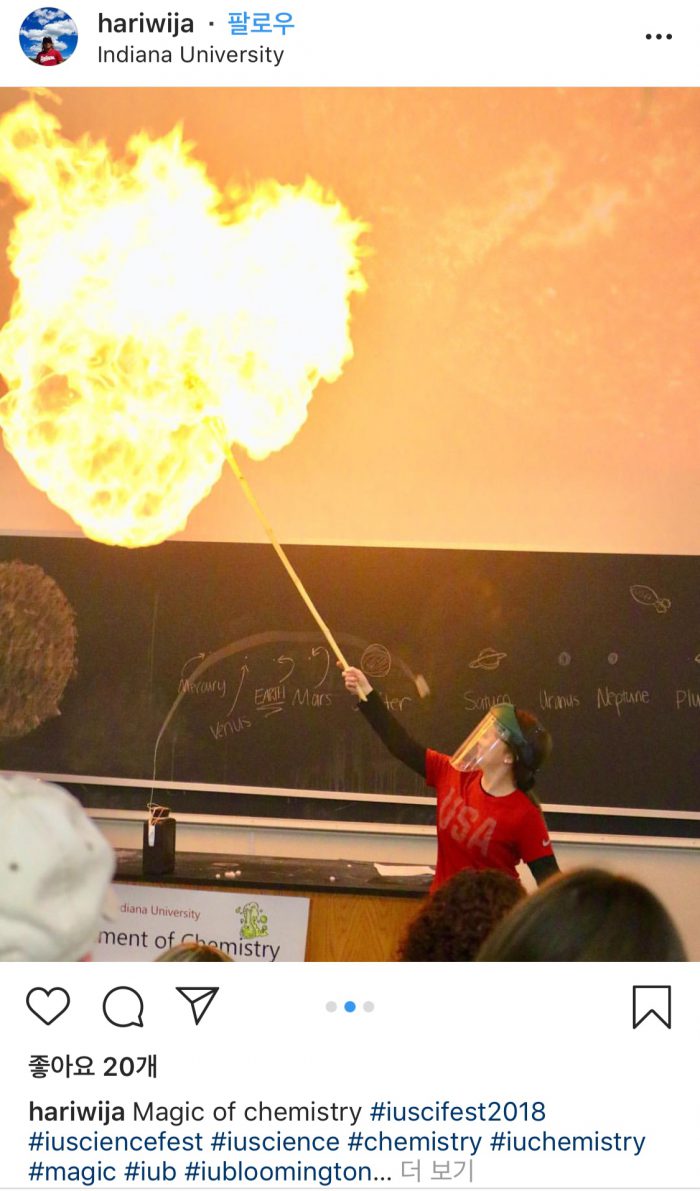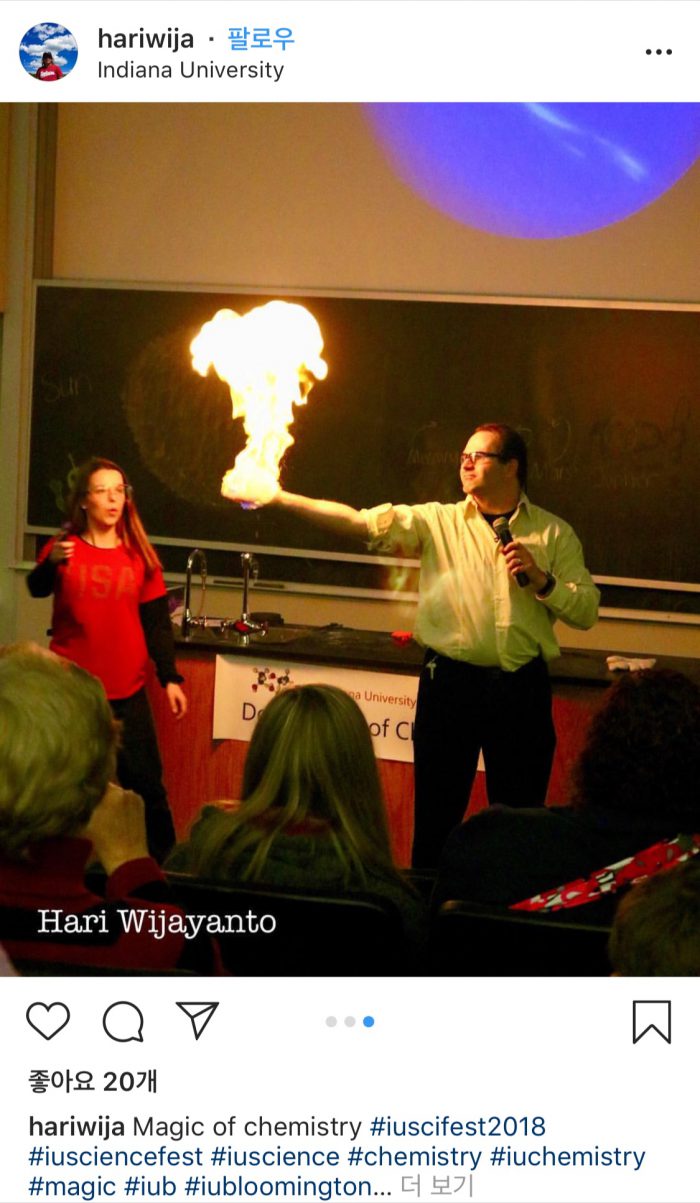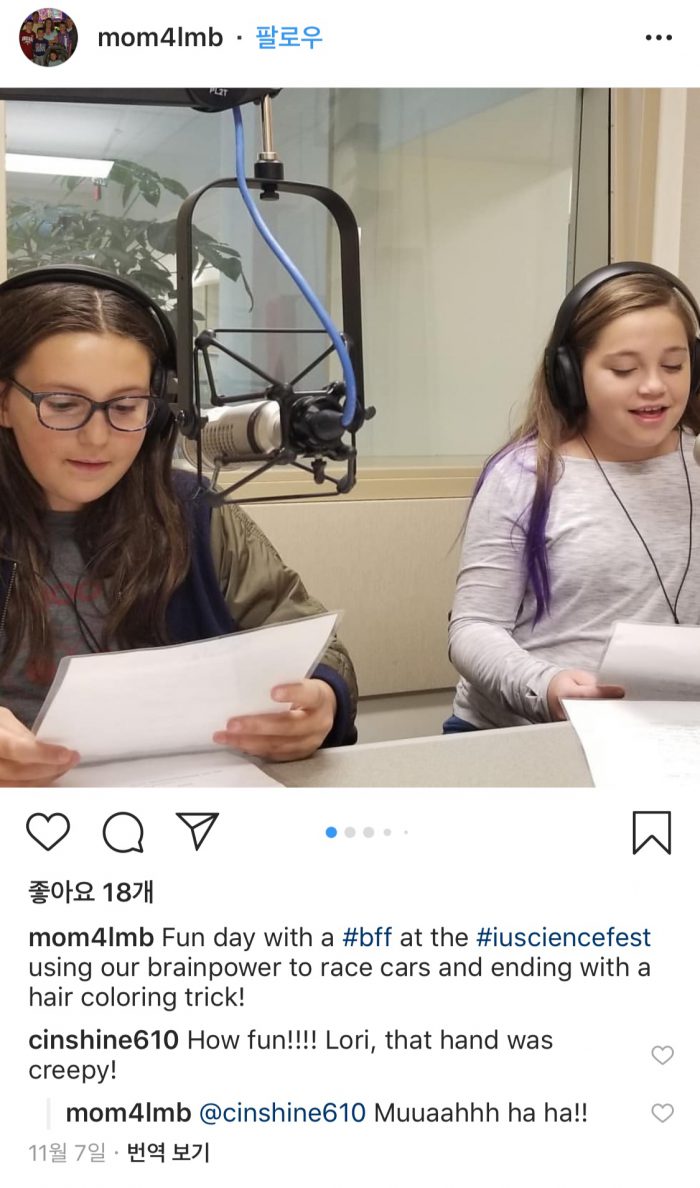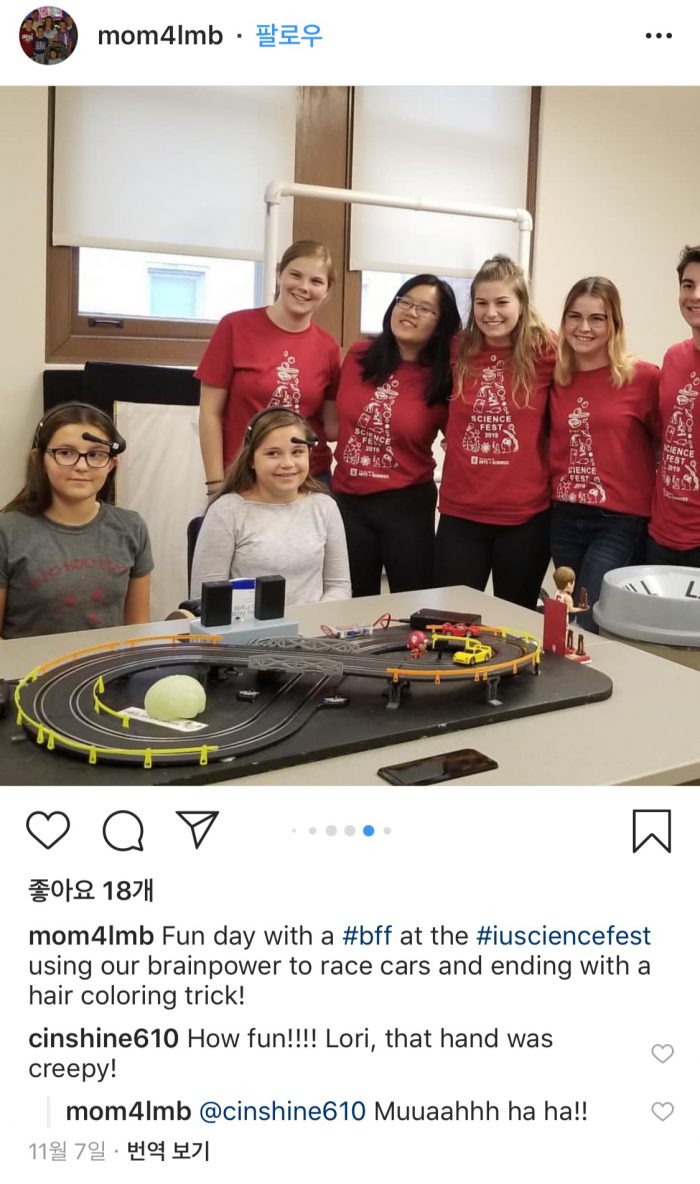Indiana University’s 6th annual Science Festival was a success inside ,many buildings at IU, despite heavy rain outside on October 26th. The Annual Science Festival was free and open to the public. Indiana University was expecting to welcome more than 3000 guests from all over state, but only a third came–about 1000 people–because of bad weather. Because there were fewer people than IU expected, parents and children were able to participate more events and spend more time at each exhibit. More than 20 IU departments, including The Media School and disciplines from physics to paleontology offered more than 150 hands-on activities, demonstrations, and talks for children and parents to help make science more accessible.
Children could learn directly from the scientists, specialists, and students studying these fields. Parents participated and were free to take pictures of children learning and enjoying. IU made details available on a public link: sciencefest.indiana.edu
Attendees could plan their day in advance with an activities map to save time.
Attendees said it was a great opportunity for children and parents to spend quality time together and to learn science through fun activities. The Media School in Franklin Hall offered all kinds of technology experiences from audio-visual production and physiological feedback to mind-controlled race cars and robots. Children were able to try a virtual reality game, or put on a haz-mat suit. They could experiment with the green screen in the TV studio, and more. In the Student Building, children learned about integrating the natural, social, and cultural aspects of science including mapping, tree-ring science, social justice, food sciences, and ancient tool-making.
In Kirkwood Hall, children learned about undergraduate research and exploring the art and math of design through activities like solving a cube and doing origami. In Swain Hall West, attendees explored the forces of nature. Physics, Astronomy, Mathematics, and Optometry experts were on hand to help. In the Chemistry Building, there were all kinds of hands-on chemistry and magnetic activities. Parents and children learned about astronomy and how to safely view the sun during an eclipse. And last, children learned about life science from plants to bugs to bacteria from biologists at Jordan Hall.








